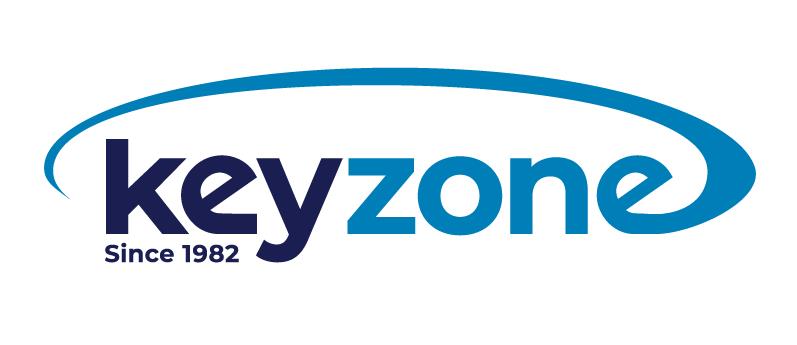We use cookies to make your experience better.
To comply with the new e-Privacy directive, you agree to the privacy policy and our use of cookies.
Intel X550T2 network card Internal Ethernet 10000 Mbit/s
SKU
X550T2
| Connectivity technology | Wired |
|---|---|
| Host interface | PCI Express |
| Interface | Ethernet |
| Maximum data transfer rate | 10000 Mbit/s |
| SKU | X550T2 |
| EAN | 5032037080699 |
| Manufacturer | Intel |
| Availability | In Stock |
iWARP/RDMA
iWARP delivers converged, low-latency fabric services to data centers through Remote Direct Memory Access (RDMA) over Ethernet. The key iWARP components that deliver low-latency are Kernel Bypass, Direct Data Placement, and Transport Acceleration.
Intel® Data Direct I/O Technology
Intel® Data Direct I/O Technology is a platform technology that improves I/O data processing efficiency for data delivery and data consumption from I/O devices. With Intel DDIO, Intel® Server Adapters and controllers talk directly to the processor cache without a detour via system memory, reducing latency, increasing system I/O bandwidth, and reducing power consumption.
PCI-SIG* SR-IOV Capable
Single-Root I/O Virtualization (SR-IOV) involves natively (directly) sharing a single I/O resource between multiple virtual machines. SR-IOV provides a mechanism by which a Single Root Function (for example a single Ethernet Port) can appear to be multiple separate physical devices.
Flexible Port Partitioning
Flexible Port Partitioning (FPP) technology utilizes industry standard PCI SIG SR-IOV to efficiently divide your physical Ethernet device into multiple virtual devices, providing Quality of Service by ensuring each process is assigned to a Virtual Function and is provided a fair share of the bandwidth.
Virtual Machine Device Queues (VMDq)
Virtual Machine Device Queues (VMDq) is a technology designed to offload some of the switching done in the VMM (Virtual Machine Monitor) to networking hardware specifically designed for this function. VMDq drastically reduces overhead associated with I/O switching in the VMM which greatly improves throughput and overall system performance
iWARP delivers converged, low-latency fabric services to data centers through Remote Direct Memory Access (RDMA) over Ethernet. The key iWARP components that deliver low-latency are Kernel Bypass, Direct Data Placement, and Transport Acceleration.
Intel® Data Direct I/O Technology
Intel® Data Direct I/O Technology is a platform technology that improves I/O data processing efficiency for data delivery and data consumption from I/O devices. With Intel DDIO, Intel® Server Adapters and controllers talk directly to the processor cache without a detour via system memory, reducing latency, increasing system I/O bandwidth, and reducing power consumption.
PCI-SIG* SR-IOV Capable
Single-Root I/O Virtualization (SR-IOV) involves natively (directly) sharing a single I/O resource between multiple virtual machines. SR-IOV provides a mechanism by which a Single Root Function (for example a single Ethernet Port) can appear to be multiple separate physical devices.
Flexible Port Partitioning
Flexible Port Partitioning (FPP) technology utilizes industry standard PCI SIG SR-IOV to efficiently divide your physical Ethernet device into multiple virtual devices, providing Quality of Service by ensuring each process is assigned to a Virtual Function and is provided a fair share of the bandwidth.
Virtual Machine Device Queues (VMDq)
Virtual Machine Device Queues (VMDq) is a technology designed to offload some of the switching done in the VMM (Virtual Machine Monitor) to networking hardware specifically designed for this function. VMDq drastically reduces overhead associated with I/O switching in the VMM which greatly improves throughput and overall system performance
| Ports & interfaces | |
|---|---|
| Internal | Yes |
| PCI version | 3.0 |
| Ethernet LAN (RJ-45) ports | 2 |
| PCI Card form factor | Half-height (low-profile) |
| Interface | Ethernet |
| Host interface | PCI Express |
| Connectivity technology | Wired |
| Bandwidth | |
| Data transfer rate | 8 GT/s |
| Maximum data transfer rate | 10000 Mbit/s |
| Network | |
| Data transfer rate | 8 GT/s |
| VLAN tagging | Yes |
| Ethernet interface type | 5 Gigabit Ethernet, 10 Gigabit Ethernet, Fast Ethernet, Gigabit Ethernet |
| iSCSI support | Yes |
| Ethernet LAN | Yes |
| Cabling technology | 10GBase-T |
| Networking standards | IEEE 802.1Q, IEEE 802.1as, IEEE 802.1p, IEEE 802.3, IEEE 802.3ad |
| Maximum operating distance | 100 m |
| LAN controller | Intel® X550 |
| Ethernet LAN data rates | 100,1000,2500,5000,10000 Mbit/s |
| Maximum data transfer rate | 10000 Mbit/s |
| Technical details | |
| Interface type | PCIe v3.0 (8.0 GT/s) |
| Product colour | Green, Silver |
| Speed & slot width | 8.0 GT/s, x4 Lane |
| PCI-SIG* SR-IOV Capable | Yes |
| PCI Card form factor | Half-height (low-profile) |
| On-chip QoS and Traffic Management | Yes |
| Number of VLANs | 4096 |
| Low halogen options available | No |
| iWARP/RDMA | No |
| Intelligent Offloads | Yes |
| Intel Virtualization Technology for Connectivity (VT-c) | Yes |
| Intel Virtual Machine Device Queues (VMDq) | Yes |
| Intel Flexible Port Partitioning | Yes |
| Intel Data Direct I/O Technology | Yes |
| Fiber Channel over Ethernet | Yes |
| Storage Over Ethernet | iSCSI, FCoE, NFS |
| Harmonized System (HS) code | 85176990 |
| Export Control Classification Number (ECCN) | 5A992C |
| Commodity Classification Automated Tracking System (CCATS) | G135872 |
| Product type | Network Interface Card |
| Processor family | 500 Network Adapters (up to 10GbE)-500 Network Adapters (up to 10GbE) |
| Status | Launched |
| Product brief URL | http://www.intel.com/content/www/us/en/ethernet-products/converged-network-adapters/ethernet-x550-brief.html |
| Network interface card type | Server |
| Network interface card cable medium | Copper |
| Market segment | Server |
| Launch date | Q1'16 |
| Last change | 64826838 |
| Design | |
| Product colour | Green, Silver |
| Internal | Yes |
| PCI Card form factor | Half-height (low-profile) |
| Conflict-Free | Yes |
| Product family | Intel 10 Gigabit server adapter |
| Product series | 500 Series Network Adapters (up to 10GbE) |
| Software | |
|---|---|
| Windows operating systems supported | Windows 7 Enterprise, Windows 7 Enterprise x64, Windows 7 Home Basic, Windows 7 Home Basic x64, Windows 7 Home Premium, Windows 7 Home Premium x64, Windows 7 Professional, Windows 7 Professional x64, Windows 7 Starter, Windows 7 Starter x64, Windows 7 Ultimate, Windows 7 Ultimate x64, Windows 8, Windows 8 Enterprise, Windows 8 Enterprise x64, Windows 8 Pro, Windows 8 Pro x64, Windows 8 x64 |
| Linux operating systems supported | Red Hat Enterprise Linux WS 5.0, Red Hat Enterprise Linux WS 6.0, SUSE Linux Enterprise Desktop 10, SUSE Linux Enterprise Desktop 11 |
| System requirements | |
| Server operating systems supported | Windows Server 2003, Windows Server 2008 R2, Windows Server 2008 R2 x64, Windows Server 2008 x64, Windows Server 2012 R2, Windows Server 2012 R2 x64 |
| Windows operating systems supported | Windows 7 Enterprise, Windows 7 Enterprise x64, Windows 7 Home Basic, Windows 7 Home Basic x64, Windows 7 Home Premium, Windows 7 Home Premium x64, Windows 7 Professional, Windows 7 Professional x64, Windows 7 Starter, Windows 7 Starter x64, Windows 7 Ultimate, Windows 7 Ultimate x64, Windows 8, Windows 8 Enterprise, Windows 8 Enterprise x64, Windows 8 Pro, Windows 8 Pro x64, Windows 8 x64 |
| Linux operating systems supported | Red Hat Enterprise Linux WS 5.0, Red Hat Enterprise Linux WS 6.0, SUSE Linux Enterprise Desktop 10, SUSE Linux Enterprise Desktop 11 |
| Compatible operating systems | https://www.intel.com/content/www/us/en/support/articles/000025890/network-and-i-o/ethernet-products.html |
| Operational conditions | |
| Operating temperature (T-T) | 0 - 55 °C |
| Storage temperature (T-T) | -40 - 70 °C |
| Storage relative humidity (H-H) | 0 - 90% |
| Performance | |
| Server operating systems supported | Windows Server 2003, Windows Server 2008 R2, Windows Server 2008 R2 x64, Windows Server 2008 x64, Windows Server 2012 R2, Windows Server 2012 R2 x64 |
| Conflict-Free | Yes |
| Desktop Management Interface (DMI) version | 2.0 |
| Ethernet adapter ARK ID | 88209 |
| Windows operating systems supported | Windows 7 Enterprise, Windows 7 Enterprise x64, Windows 7 Home Basic, Windows 7 Home Basic x64, Windows 7 Home Premium, Windows 7 Home Premium x64, Windows 7 Professional, Windows 7 Professional x64, Windows 7 Starter, Windows 7 Starter x64, Windows 7 Ultimate, Windows 7 Ultimate x64, Windows 8, Windows 8 Enterprise, Windows 8 Enterprise x64, Windows 8 Pro, Windows 8 Pro x64, Windows 8 x64 |
| Linux operating systems supported | Red Hat Enterprise Linux WS 5.0, Red Hat Enterprise Linux WS 6.0, SUSE Linux Enterprise Desktop 10, SUSE Linux Enterprise Desktop 11 |
| Speed & slot width | 8.0 GT/s, x4 Lane |
| PCI-SIG* SR-IOV Capable | Yes |
| On-chip QoS and Traffic Management | Yes |
| Number of VLANs | 4096 |
| iWARP/RDMA | No |
| Intelligent Offloads | Yes |
| Intel Virtual Machine Device Queues (VMDq) | Yes |
| Intel Flexible Port Partitioning | Yes |
| Intel Data Direct I/O Technology | Yes |
| Fiber Channel over Ethernet | Yes |
| Other features | |
| Compatible operating systems | https://www.intel.com/content/www/us/en/support/articles/000025890/network-and-i-o/ethernet-products.html |
| Conflict-Free | Yes |
| Data transfer rate | 8 GT/s |
| Product type | Network Interface Card |
| Desktop Management Interface (DMI) version | 2.0 |
| Processor family | 500 Network Adapters (up to 10GbE)-500 Network Adapters (up to 10GbE) |
| Ethernet adapter ARK ID | 88209 |
| Interface type | PCIe v3.0 (8.0 GT/s) |
| Cable type | RJ45 Category 6 up to 55m; Category 6A up to 100m |
| Speed & slot width | 8.0 GT/s, x4 Lane |
| PCI-SIG* SR-IOV Capable | Yes |
| On-chip QoS and Traffic Management | Yes |
| Number of VLANs | 4096 |
| Low halogen options available | No |
| iWARP/RDMA | No |
| Intelligent Offloads | Yes |
| Intel Virtualization Technology for Connectivity (VT-c) | Yes |
| Intel Virtual Machine Device Queues (VMDq) | Yes |
| Intel Flexible Port Partitioning | Yes |
| Intel Data Direct I/O Technology | Yes |
| Fiber Channel over Ethernet | Yes |
| Storage Over Ethernet | iSCSI, FCoE, NFS |
| Status | Launched |
| Product brief URL | http://www.intel.com/content/www/us/en/ethernet-products/converged-network-adapters/ethernet-x550-brief.html |
| Network interface card type | Server |
| Network interface card cable medium | Copper |
| Market segment | Server |
| Launch date | Q1'16 |
| Last change | 64826838 |
| Product family | Intel 10 Gigabit server adapter |
| Product series | 500 Series Network Adapters (up to 10GbE) |
| Harmonized System (HS) code | 85176990 |
| Export Control Classification Number (ECCN) | 5A992C |
| Commodity Classification Automated Tracking System (CCATS) | G135872 |
| Controller type | Intel® Ethernet Controller X550 |
| Cabling type | RJ45 Category 6 up to 55m; Category 6A up to 100m |
| Bracket height | Low-Profile (LP) / Full-Height (FH) |
| Logistics data | |
| Harmonized System (HS) code | 85176990 |
You may also be interested in
| Product |
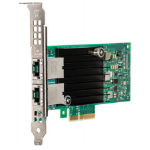
Hot Product
Intel X550T2 network card Internal Eth...
Login for pricing
|
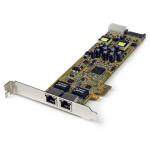
Popular
StarTech.com Dual Port PCI Express Gig...
Login for pricing
|
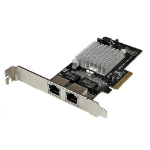
Recommended
StarTech.com Dual Port PCI Express (PC...
Login for pricing
|
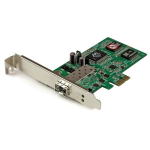 StarTech.com PCI Express Gigabit Ether...
Login for pricing
StarTech.com PCI Express Gigabit Ether...
Login for pricing
|
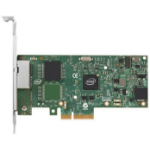
Bestseller
Intel I350T2V2BLK network card Interna...
Login for pricing
|
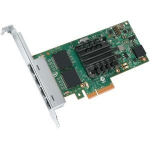 Intel I350T4V2 network card Internal E...
Login for pricing
Intel I350T4V2 network card Internal E...
Login for pricing
|
|---|---|---|---|---|---|---|
| SKU |
X550T2
|
ST2000PEXPSE
|
ST2000SPEXI
|
PEX1000SFP2
|
I350T2V2BLK
|
I350T4V2
|
| Manufacturer |
Intel
|
StarTech.com
|
StarTech.com
|
StarTech.com
|
Intel
|
Intel
|
| Connectivity technology |
Wired
|
Wired
|
Wired
|
Wired
|
Wired
|
Wired
|
| Interface |
Ethernet
|
Ethernet
|
Ethernet
|
Fiber
|
Ethernet
|
Ethernet
|
| Internal |
Y
|
Y
|
Y
|
Y
|
Y
|
Y
|
| Host interface |
PCI Express
|
PCI Express
|
PCI Express
|
PCI Express
|
PCI Express
|
PCI Express
|
